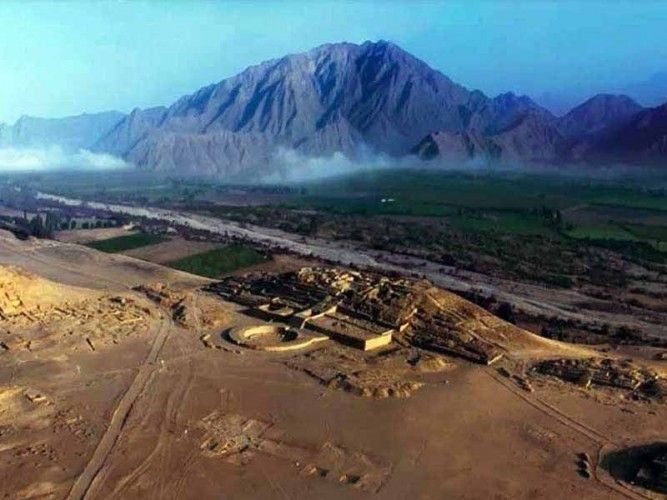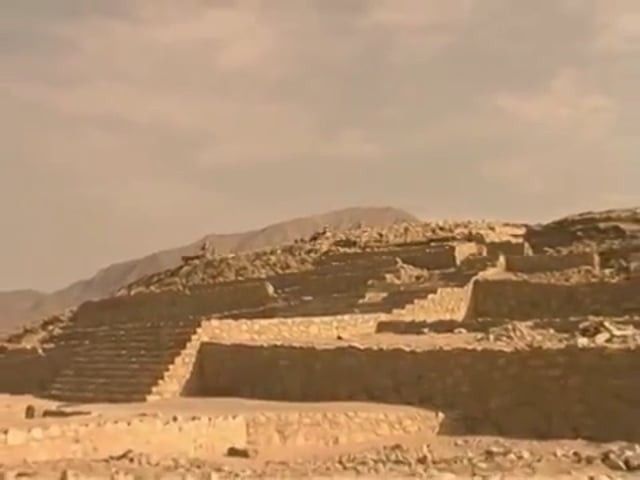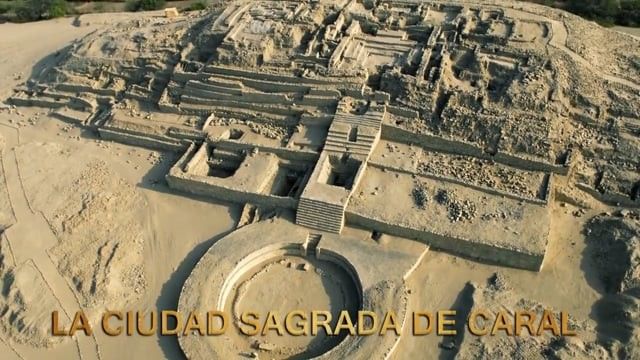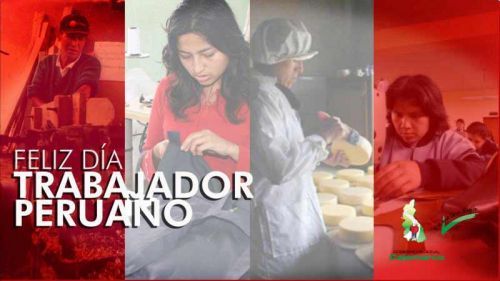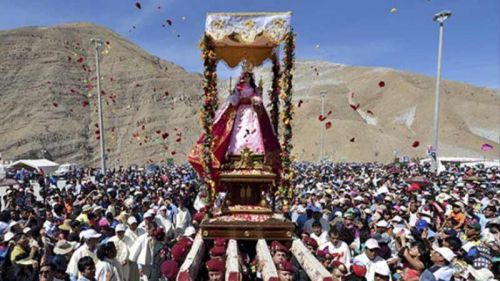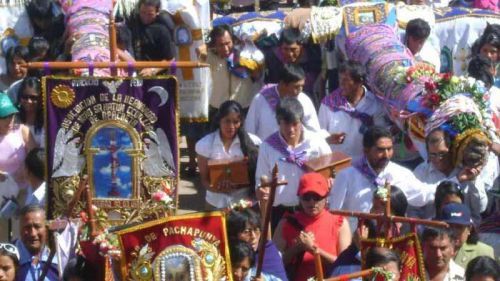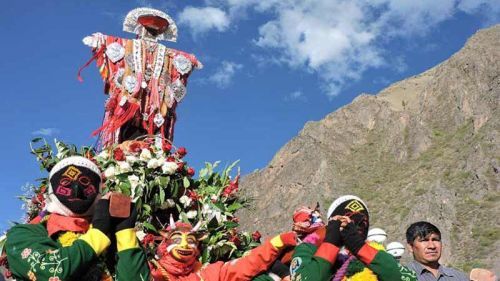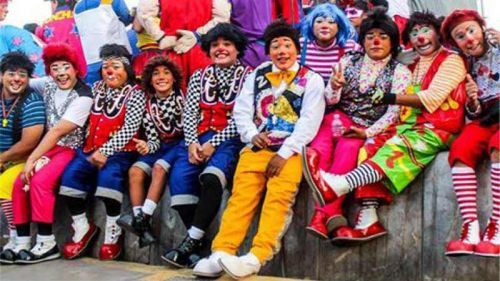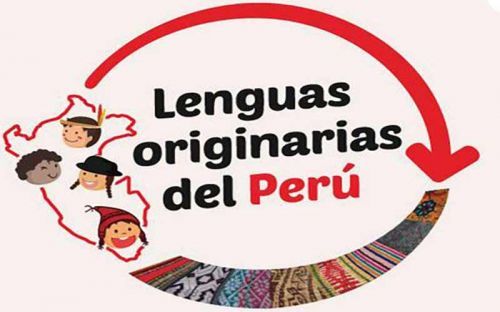Neither explores nor tomb raiders could find anything of real value after the discovery of an ancient settlement in the early 20th century; no gold, no silver, no ceramics, no weapons or other archaeological treasures. So for nearly 100 years a huge archaeological complex sat nearly forgotten and completely unnoticed on a desert plateau overlooking the valley of the Supe river about 180 km (110 miles) north of Lima without anyone knowing what treasures were hidden there.
Only when excavations started in 1996 revealing the age of the ruins, the importance and heritage of The Sacred City of Caral became clear.
The oldest settlement in the Americas
Radiocarbon dating disclosed that the so many years ignored site dates back to 2627 BC. With this discovery history was rewritten: the “Ciudad Sagrada Caral” is the oldest settlement in the Americas and roughly as old as the pyramids in Egypt. So there was no doubt anymore that not only in Egypt, Mesopotamia, China and India great cultures reigned at this time, but even the “new world” was already civilized back then.
A sophisticated center built 5000 years ago
As known today, Caral was a sophisticated center built by the Norte Chico civilization about 5000 years ago. The settlement, which covers 600 hectares, features complex and monumental structures like six enormous pyramids, temples, palaces, residential buildings, an amphitheater and circular places for public gatherings. The planning of the entire city as well as its construction and the axial alignment of some buildings not only required a sophisticated knowledge of geometry, topography and astronomy but also a high degree of technology and social organization.
Caral - a peaceful society based on trade
Caral was most probably the capital of an advanced civilization where a political and social elite, a religious leadership, craftsmen and farmers lived. The urban settlement flourished between 2600 BC and 2000 BC, accommodating over 3000 people. In order to provide for this number of people, the desert-like grounds were irrigated with an elaborate system of channels and among others grain, corn and legumes were cultivated. As excavations in Caral also revealed remains of fish, tropical fruits and other foods / materials not occurring in this area, but no weapons. scientist assume that the society was based on trade with other civilizations that lived as far as in today’s Bolivia and Ecuador, religious worshipping and peaceful coexistence.
More similar settlements in the area
Scattered across the 80sq. km area of the Supe valley, 19 other urban settlements were found that share similarities with Caral. This might show that the Sacred City was part of an even vaster complex.
The Sacred City of Caral - Supe was declared World Heritage Site by the UNESCO in 2009. As with many other important archaeological sites, the complex is perpetuated on the Peruvian currency. On the back of the S/. 200 banknote and on the 16th coin of the Wealth and Pride Coin Series you find Caral’s characteristic round plaza.
Useful Travel Information for Caral
Even though the full extent of this impressive culture still isn’t known and excavation of this vast complex is ongoing, the Sacred City of Caral is open for visitors and worth a visit.
How to get to Caral
By car: From Lima you can reach Caral within 3 to 4 for hours by car. Just take the Panamericana Norte to km 184. There turn right and follow the signs for about 23 km to the “Centro Poblado”. Follow the road to the right until you reach the pedestrian bridge. Leave your car there and walk for about 20 minutes to the reception area. Note: From May to November you can cross the river and get to the reception area by car.
By public transportation: If you are travelling with public transportation take a bus that goes in the northern direction. When you reach Supe Pueblo (km 184 of the Panamericana Norte) get off at the Mercado de Supe. Just a block from the market is the stop for taxis and colectivos (shared taxis) that go to the Centro Poblado or the village Caral. The cars leave once they have six passengers and drop you off at the pedestrian entrance to the archeological site, where there is a well-signposted pedestrian route. It will take you about 20 minutes to reach the site of Caral. Please note for your return that they only run until 4.00 pm. The shared taxi usually sets you back S/. 4 – S/. 6 per person while a taxi that can drop you off directly at the reception area will cost you about S/. 40. Please coordinate your return directly with the driver.
Booked tour: Additionally, some tour operators offer tours to Caral that usually start quite early in the morning from Lima. The day trips aren’t cheap, but mostly include breakfast and lunch.
- Opening hours: daily (including holidays) from 09.00 am to 04.00 pm. It’s recommend getting to Caral before 02.30 pm
- Entrance fees: Adults S/. 11 plus S/. 20 for an official guide for a group of up to 20 persons
- Please note: An official guide is obligatory! The guided tour is held in Spanish only (if you booked a tour, the accompanying guide often acts as translator), but the informative signs in Caral are in Spanish and English.
- Handicapped visitors: Caral offers a special tour for visitors with limited mobility. Please inform the administration in advance by e-mail about your visit under viajeseducativos@zonacaral.gob.pe
- Food: At the reception area you find seats and tables. You can bring your own packed lunch or on weekends enjoy the typical dishes prepared by the Asociacion de Vianderas de Caral.


